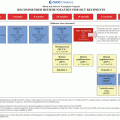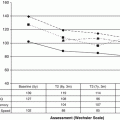© Springer New York 2015
Grace A. Mucci and Lilibeth R. Torno (eds.)Handbook of Long Term Care of The Childhood Cancer SurvivorSpecialty Topics in Pediatric Neuropsychology10.1007/978-1-4899-7584-3_2323. Special Education Laws
(1)
Law Offices of Michael E. Jewell, APLC, 265 S. Anita Drive, Suite 207, Orange, CA, USA
Keywords
Special education lawAmerican’s with Disabilities ActSection 504Individuals with Disabiltiies Education ActIDEA23.1 Introduction
Federal and state law both play a role in educating a child with a disability. The confines of this publication only permit a very general overview of federal law with no specific discussion of its application to any particular state since variations exists among the states. As this is an overview of applicable law, it is intended for general information purposes only and is not intended as legal advice. Any liability that might arise from use or reliance on this information in this chapter or on the websites referenced herein is expressly disclaimed.
23.2 Section 504 of the Rehabilitation Act of 1973
23.2.1 Background
Section 504 of the Rehabilitation Act of 1973 (“Section 504”) prohibits discrimination for a “physical or mental impairment which substantially limits one or more major life activities”.1 Section 504 applies to any entity which receives funds from the U.S. Department of Education, including private institutions.2 From an educational standpoint, it is designed to ensure that the individual has appropriate access to his or her education. It can affect preschools through colleges.3 It applies to public school districts and may apply to private educational institutions.
This section will focus on the requirements applicable to public elementary and secondary school districts. While Section 504 requires that an individual receive a free appropriate public education (“FAPE”), the provision of an Individual Education Plan under the Individuals with Disabilities Education Act (see below) is only one way that an entity may meet this requirement. When looking at how a child should be supported and/or accommodated to ensure progress in the educational setting, a determination should be made whether the child is entitled to Individualized Education Plan (“IEP”) or a 504 plan. Generally speaking, an IEP is a more detailed document with more exacting procedures (see below), while a 504 plan is principally designed to adapt a class or program to the child.
23.2.2 Process
Individuals eligible under Section 504 may be entitled to receive a “504 Plan”. This is a plan designed to ensure that the individual has an equal opportunity to access his or her education. A 504 plan adapts a program for the individual (e.g., reducing the amount of work the student must perform, changing the class schedule, allowing the student notes from other students or from the instructor, and providing specific seating in the class or additional time to complete classwork, assignments or homework). Unlike an IEP (discussed in more detail below), a 504 plan does not offer supportive services like therapy from a professional (such as, a speech and language therapist, occupational therapist, etc.).
A child must be evaluated to determine whether he or she is eligible for a 504 plan. The evaluation should use testing by qualified individuals with tests designed to evaluate the “areas of educational need” and which “accurately reflect the student’s aptitude or achievement level.”4 A meeting is held with parents and school staff to discuss whether the child is eligible for a 504 plan. If the child is found eligible, a written 504 plan is developed by the participants in that meeting. Upon receiving written consent from the child’s parents, the 504 plan should be provided to all those individuals who might be responsible for implementing the plan. A meeting should be convened at least once a year to review the 504 plan and make appropriate changes. Revisions to the 504 plan can be made as the child’s needs change.
23.2.3 Role of Professionals
Professionals wishing to help a family to obtain a 504 plan should prepare written information for the school district staff identifying the impairment which limits one or more life functions describing the impact of the impairment and outlining what steps can be taken to accommodate the student. There are many resources available on the Internet (including state department of education websites; please see the Resources section at the end of this manuscript), which identify some accommodations that might be available to a child who qualifies for a 504 plan. If time and circumstances permit, an observation of the child in the educational setting as well as input from school district staff who work with the child in the educational setting can be very helpful to the professional in formulating what accommodations might be appropriate for the child. Professionals should consider participating in the 504 meeting (either in person or by telephone) to discuss their professional opinion regarding the needs of the child and the accommodations necessary for the child to be successful.
23.3 Individuals with Disabilities Education Act
23.3.1 Background
The Individuals with Disabilities Education Act, or “IDEA” (20 U.S.C. §1400 et seq.) is designed to ensure that each child receives a “free appropriate public education that emphasizes special education and related services designed to meet his or her unique needs and prepare him or her for further education, employment, and independent living.”5 The IDEA makes federal funds available to public school districts to help accomplish its purposes and its implementing regulations may be found at 34 U.S.C. §300.300 et seq. (please see Resources chapter). (Of note, Congress’s initial effort to address the educational needs of disabled children was through the Education for All Handicapped Children of 1975.)
23.3.2 Process
To be eligible under the IDEA, a child must have a disability which impacts the child educationally. The educational impact may not be the result of “lack of instruction” in reading or math or limited English proficiency.6 Potential categories of eligibility include “intellectual disabilities, hearing impairments (including deafness), speech or language impairments, visual impairments (including blindness), serious emotional disturbance, orthopedic impairments, autism, traumatic brain injury, other health impairments, or specific learning disabilities.”7 Generally, the IDEA requires that a free appropriate public education be made available to qualified individuals between the ages of 3–21, however, state law may impact eligibility before 5 and after 18.8 School districts have an affirmative duty to seek out children who might be eligible under the IDEA.9
Stay updated, free articles. Join our Telegram channel

Full access? Get Clinical Tree







